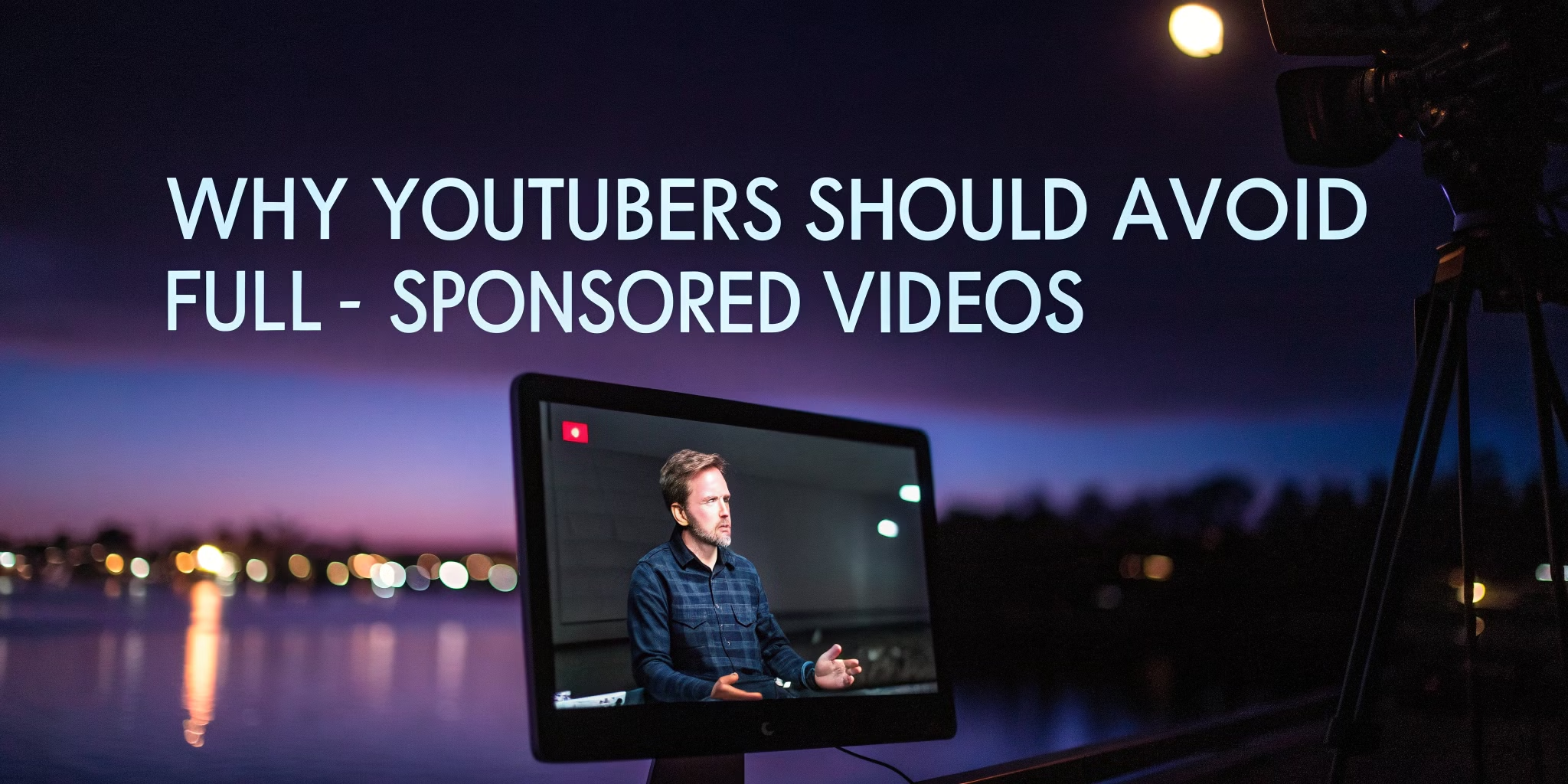Why YouTubers Should Avoid Full-Sponsored Videos
Monetizing a YouTube channel often involves brand sponsorships, but not all sponsorship approaches are created equal. Full-sponsored videos—content solely focused on promoting a single product or brand—can carry significant risks. Here’s why creators should think twice before agreeing to them.

1. What is a Full-Sponsored Video?
A full-sponsored video dedicates all its time and focus to a single brand or product. Unlike brief sponsored segments, these videos resemble advertisements rather than entertainment or educational content. While they can be lucrative, they often clash with audience expectations.
2. Full-Sponsored vs. Sponsored Messages
The key difference lies in how sponsorships integrate with the content.
- Sponsored Messages: Brief, unobtrusive ads that appear naturally within the video. They allow creators to stay true to their core content while earning revenue.
- Full-Sponsored Videos: Entire videos are promotional, sometimes requiring creators to follow strict scripts. These can make the content feel less authentic and more commercialized.
3. The Risk of Losing Audience Trust
Audiences subscribe to creators for their unique perspectives, not for commercials. A full-sponsored video can feel disingenuous, leading viewers to question a creator’s integrity. Research shows excessive sponsorships can erode trust, with creators potentially losing subscribers after such uploads.
4. Damage to Reputation
When creators overuse full-sponsored videos, they risk being seen as “sellouts.” This not only harms their relationship with their audience but also makes future sponsorships less appealing to quality brands. Maintaining a balance is crucial for long-term credibility.
5. Channel Decline
Several creators have faced backlash after flooding their channels with promotional content. Data suggests that excessive sponsorships can lead to declining viewership and disengaged subscribers. Even if viewers don't unsubscribe, too many sponsored videos can create "ghost subscribers" - people who stay subscribed but rarely watch unless a video seems especially interesting. This leads to fewer views per video and a decline in algorithm recommendation which makes companies less interested in future sponsorships. To keep viewers happy and engaged, creators need to find the right balance between sponsored and regular content.
6. Best Practices for Sponsorships
To build a sustainable, audience-first strategy, consider these tips:
- Integrate Sponsors Naturally: Place sponsorships as brief mentions rather than the main focus.
- Prioritize Transparency: Let viewers know why you’re endorsing a product.
- Work with Aligned Brands: Partner with companies that match your channel’s values and audience interests.
- Maintain Creative Freedom: Avoid deals that force you to compromise your style or voice.
7. Additional Considerations
Creative Constraints
Full-sponsored videos often come with stringent guidelines, limiting a creator’s ability to innovate or connect with their audience authentically.
Over-Reliance on Sponsorships
When creators rely too heavily on sponsorships, their content loses diversity. This can make the channel feel repetitive and less appealing to long-term fans.
Ethical Responsibility
Creators have a responsibility to consider the impact of their promotions. Ethical partnerships resonate better with audiences and avoid promoting potentially harmful products.
8. Why Sponsors Still Seek Full-Sponsored Videos
Despite the risks for creators, sponsors have valid reasons to favor full-sponsored videos. A dedicated video ensures their product or service gets the undivided attention of the audience, maximizing their reach and potential conversions. For brands aiming for a strong impression, this is a calculated investment. They also value the control over messaging that full-sponsored videos allow, ensuring their product is showcased exactly as desired.
For sponsors, the risk of lower engagement is often outweighed by the possibility of higher returns. If the creator has an engaged and loyal audience, even a smaller viewership might yield significant results in sales or brand awareness.
9. Why Creators Accept Full-Sponsored Videos
From the creator's perspective, the financial reward for a full-sponsored video can be enticing. Such deals often offer higher payouts compared to brief mentions or integrations, helping creators fund future projects or support their personal goals. It can be particularly appealing for small or mid-sized creators who may not have regular sponsorship opportunities.
For some, taking on a full sponsorship may feel like a necessary risk, especially when their content aligns well with the sponsor's brand. However, creators must weigh this against the potential damage to audience trust and long-term channel health. Is the reward worth alienating loyal viewers? Striking a careful balance remains key.
Conclusion: While sponsorships are essential for monetization, creators must approach them strategically. By prioritizing audience trust and content authenticity, YouTubers can build sustainable careers that balance revenue with reputation.
